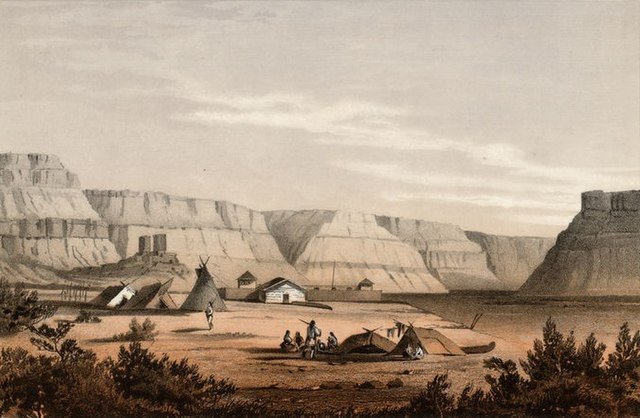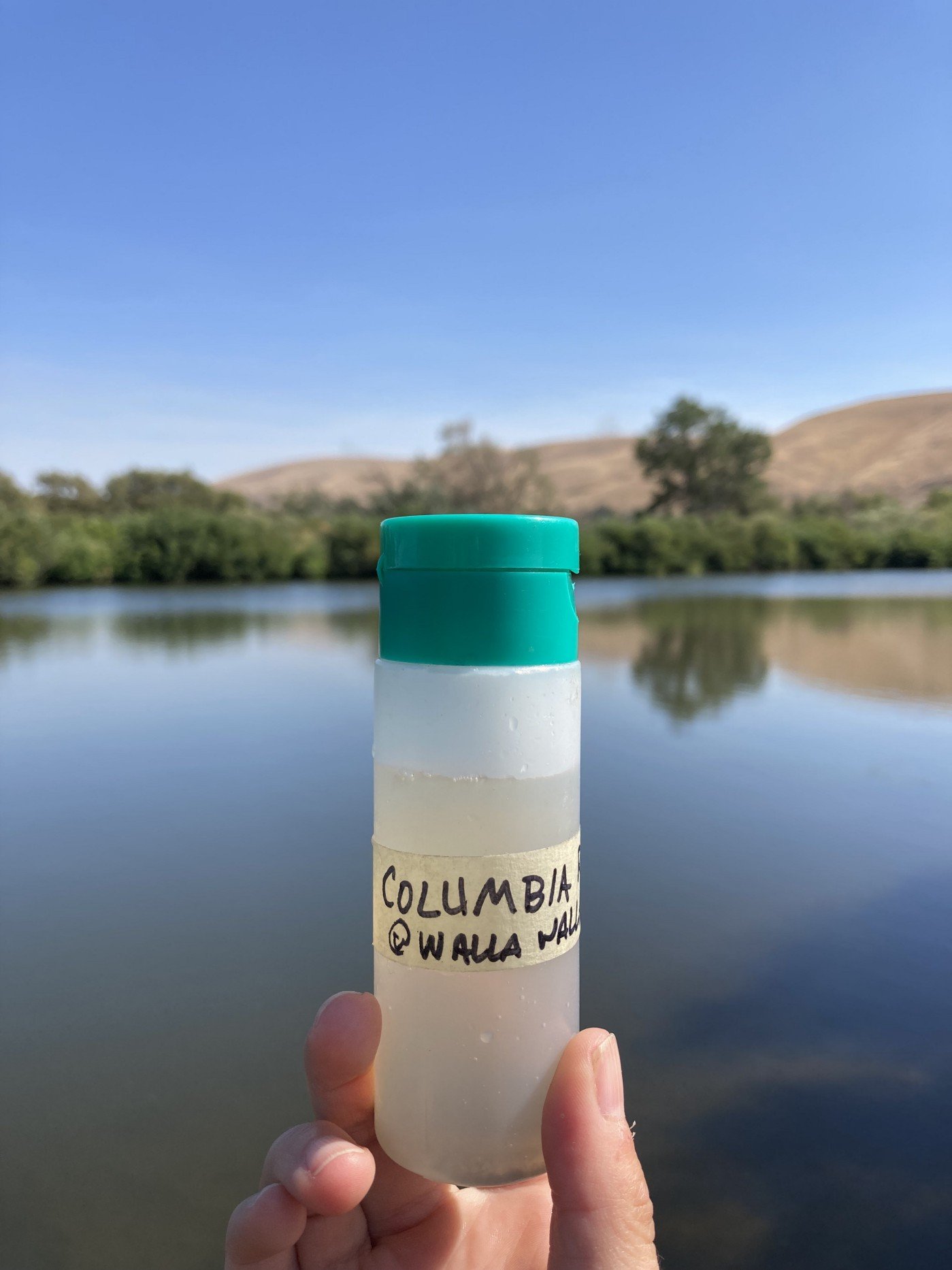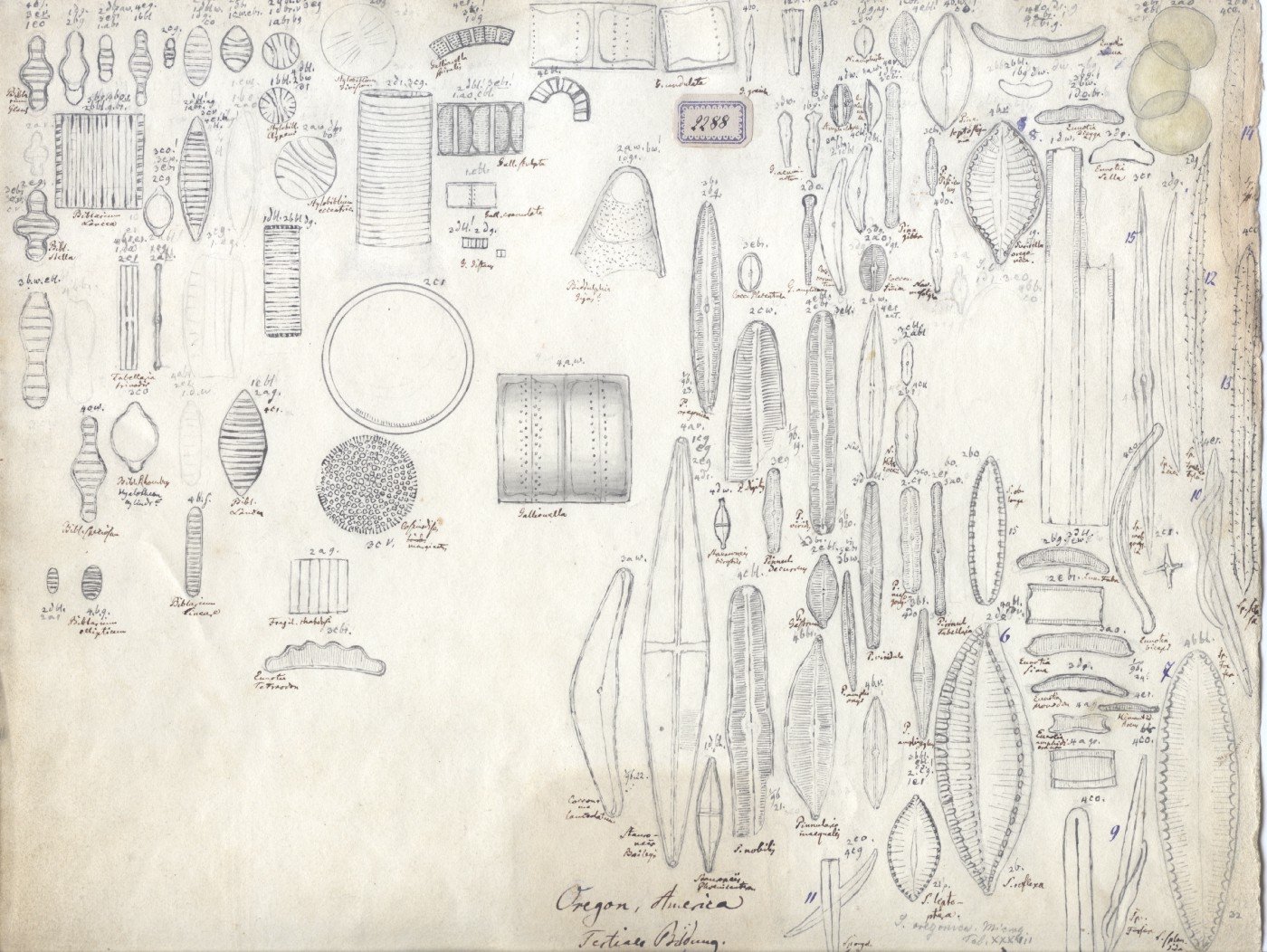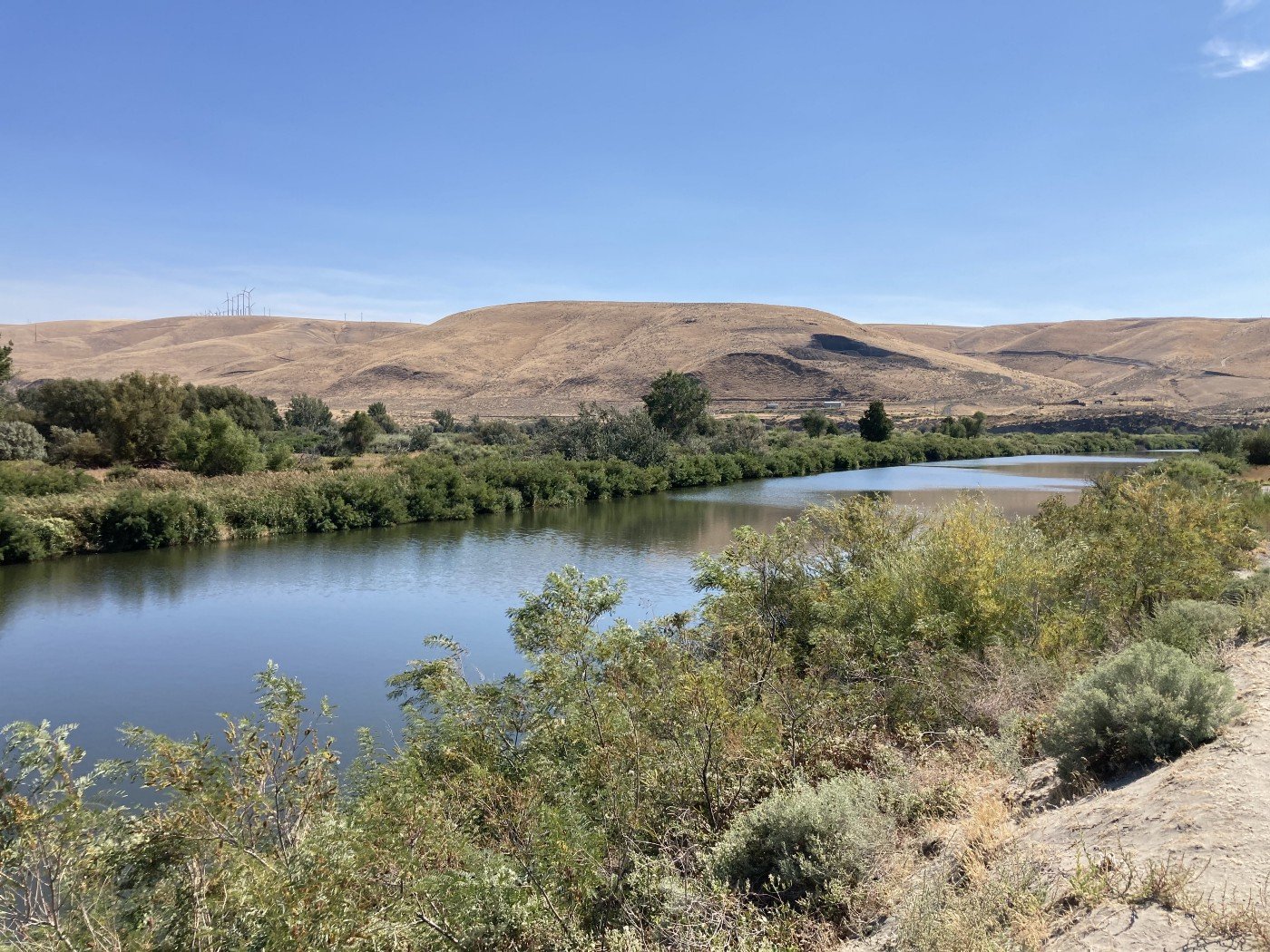The Columbia River at
Fort Walla Walla, Washington
Columbia River at Fort Walla Walla, Washington, 2021 — Ink, watercolor, algae pigment, and forest fire charcoal on paper
My third piece is also about the microbiome of the Columbia River but differs from the Columbia River at the Deschutes River and the Columbia River at The Dalles. This location is perhaps more speculative, leaning on the vagaries of the collection’s origin and records.
The Ehrenberg collection lists the Columbia River specifically in two specimens. Additional specimens seem to have been collected in Oregon. This sample is labeled:
Oregon Bailey. [In.Danu]
No further date or information is available. Because of the reference to Bailey, I believe this sample or collection of samples was those of Jacob W. Bailey who is associated with the United States Exploring Expedition, an 1838–1842 exploring and survey expedition that collected samples from what was then Oregon Territory, modern-day Oregon, Washington, and Vancouver B.C. This expedition traveled the entire world, but famously mapped the Columbia River extensively, collecting thousands of seeds, samples, and species. Bailey’s collection is currently housed at Harvard.
An 1841 Map of The Oregon Territory from the Narrative of the United States Exploring Expedition. Note the detail of the Columbia River.
This sample is particularly mysterious because it could have been collected anywhere in the vast Oregon Territory. The expedition specifically explored the Columbia River area, including the many forts that lined the banks. Of particular importance was Fort Walla Walla, also known as Fort Nez-Perce, located near modern-day Wullala, WA, west of Walla Walla.
I chose to sample near the historic location of Fort Walla Walla due to its importance as an outpost in the colonizing history of the territory as well as the confirmed record of the expedition visiting and spending time at the fort. Fort Walla Walla, along with nearby Whitman Mission, in modern Walla Walla, WA, were the most established colonial settlements in the area and appear on most territory maps of the time, including those of the Frémont Expedition. Another sample in the collection from the Puget Sound also leads me to believe this sample was likely collected in Washington.
Nez Perce Camp outside Old Fort Walla Walla, John Mix Stanley, 1853
Sample collected at the meeting of the Columbia and Walla Walla Rivers, near the historic Fort Walla Walla site in Wallula, WA.
Dr. Ehrenberg’s observations
Oregon organisms observed by Dr. Ehrenberg. Image used with permission from the Natural History Museum of Berlin.
Here the illustrations are attractively arranged in a roundel, a direct inspiration for my compositions. The upper left roundel is Oregon. Image used with permission from the Natural History Museum of Berlin.
Dr. Ehrenberg produced an absolutely packed scientific illustration bursting with microorganisms and other forms, including pine pollen. Here we can see Gomphonema, Cocconeis, Surirella, Caloneis, Pinnularia, and multiple types of centric diatoms. I believe this illustration is likely an assemblage of many samples from Oregon, including those of the Columbia River, Puget Sound, and Deschutes River.
My observations
This part of the Columbia River is very rural, located near the tiny town of Wallula, WA. Access to this part of the river is no longer possible due to railroad tracks and a grain silo port. My sample was collected at the McNary Wildlife Refuge, the closest point I could get to the confluence and fort site.
As a general theme, I observed more Ulanrians, Pinnualria, and Gyrosigma organisms than in the historical records. This could be the result of observing water samples close to the time of collection, time of year, or indicate species that were not originally present.
Walla Walla River at the confluence of the Columbia River near old Fort Walla Walla, Wallula, WA.












